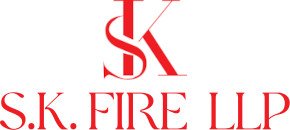SK Fire: Ensuring Protection and Prevention in the Community
SK Fire is a vital organization dedicated to ensuring the protection, prevention, and mitigation of fire-related incidents within a community. We play a crucial role in promoting fire safety awareness, implementing fire codes and regulations, conducting inspections, and responding to emergencies. In this article, we delve into the functions, responsibilities, and importance of fire safety agencies in safeguarding lives and property from the threat of fire.
Fire Safety Equipments
Fire safety equipment plays a crucial role in preventing, detecting, and extinguishing fires, thereby safeguarding lives, property, and assets. From fire extinguishers to smoke detectors and sprinkler systems, these tools are essential for mitigating the devastating effects of fires in various environments. In this article, we explore the types, functions, and importance of fire safety equipment in enhancing fire safety and preparedness.

Types of Fire Safety Equipment
Fire safety equipment encompasses a wide range of tools and devices designed to address different aspects of fire prevention, detection, and suppression:
Fire Extinguishers
Fire extinguishers are portable devices that contain extinguishing agents such as water, foam, dry chemical powder, or carbon dioxide (CO2) to suppress small fires. They are available in different classes to extinguish fires involving combustible materials, flammable liquids, electrical equipment, and cooking oils.
Smoke Detectors
Smoke detectors, also known as smoke alarms, are devices that detect the presence of smoke and emit a loud audible alarm to alert occupants of a potential fire. They are typically installed in residential, commercial, and industrial buildings to provide early warning of smoke and fire hazards.
Fire Sprinkler Systems
Fire sprinkler systems are automatic fire suppression systems consisting of sprinkler heads connected to a network of pipes filled with water or other extinguishing agents. When activated by heat, the sprinkler heads release water to extinguish or control the spread of fire, minimizing property damage and protecting occupants.
Fire Alarms and Notification Systems
Fire alarms and notification systems are designed to alert occupants of a fire emergency through audible alarms, visual signals (such as strobe lights), and voice announcements. These systems are integrated with smoke detectors, heat detectors, and manual pull stations to provide timely evacuation warnings.
Fire Blankets
Fire blankets are non-flammable blankets made from fire-resistant materials such as fiberglass or wool, designed to smother small fires by cutting off the oxygen supply. They are commonly used in kitchens, laboratories, and industrial settings to extinguish small fires or wrap around individuals to shield them from flames.
Functions of Fire Safety Equipment
Fire safety equipment serves several critical functions in fire prevention, detection, and suppression:
Early Detection
Smoke detectors and fire alarms provide early detection of smoke and fire, allowing occupants to evacuate quickly and alerting emergency responders to the location of the fire.
Rapid Response
Fire extinguishers and fire blankets enable occupants to respond quickly to small fires, containing them before they escalate into larger, more dangerous fires.
Automatic Suppression
Fire sprinkler systems automatically suppress fires by releasing water or other extinguishing agents when triggered by heat, preventing the spread of fire and limiting property damage.
Evacuation Guidance
Fire alarms and notification systems provide clear and audible evacuation instructions, guiding occupants to safety and minimizing confusion during fire emergencies.
Importance of Fire Safety Equipment
Fire safety equipment plays a critical role in protecting lives, property, and assets from the devastating effects of fires:
Life Safety
Fire safety equipment saves lives by providing early warning of fire hazards, enabling rapid evacuation, and facilitating effective fire suppression to prevent injuries and fatalities.
Property Protection
By detecting fires early and suppressing them quickly, fire safety equipment helps minimize property damage, reduce business interruptions, and protect valuable assets and infrastructure.
Code Compliance
Installation of fire safety equipment is often required by building codes, regulations, and insurance standards to ensure compliance with fire safety requirements and promote a safe working and living environment.
Peace of Mind
Knowing that effective fire safety equipment is in place provides peace of mind for building occupants, homeowners, businesses, and property managers, fostering confidence in the safety and security of the environment.
